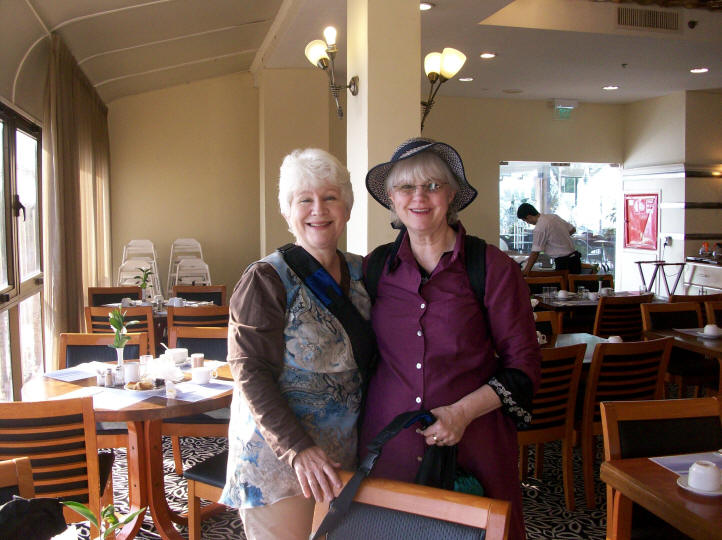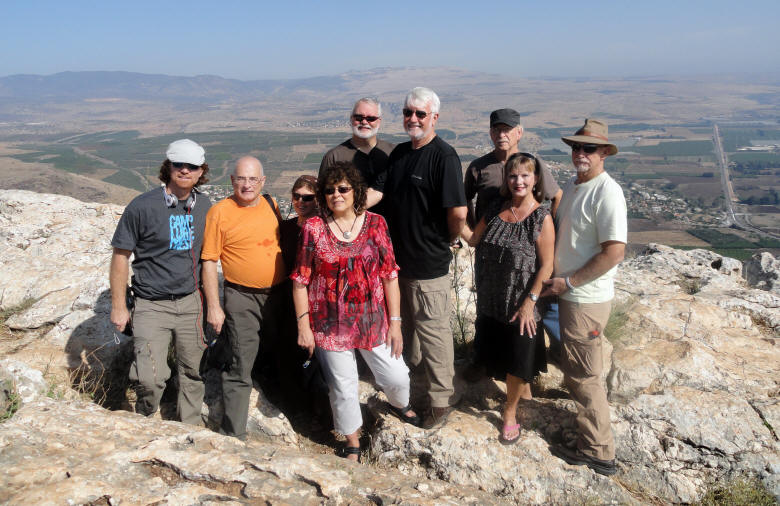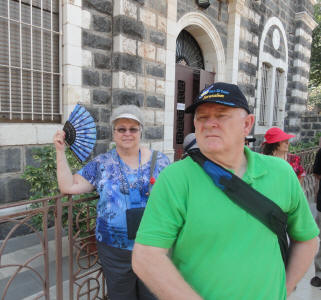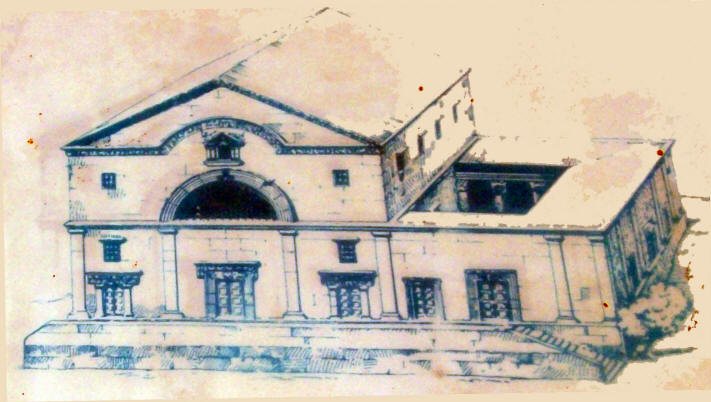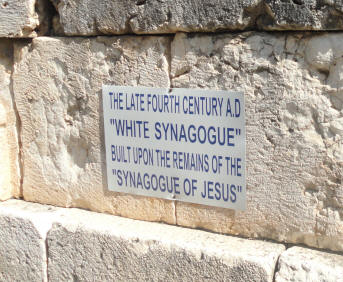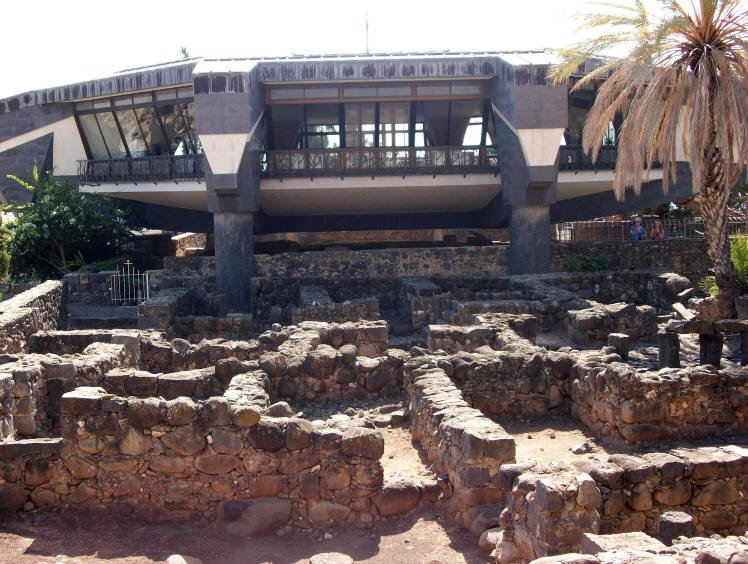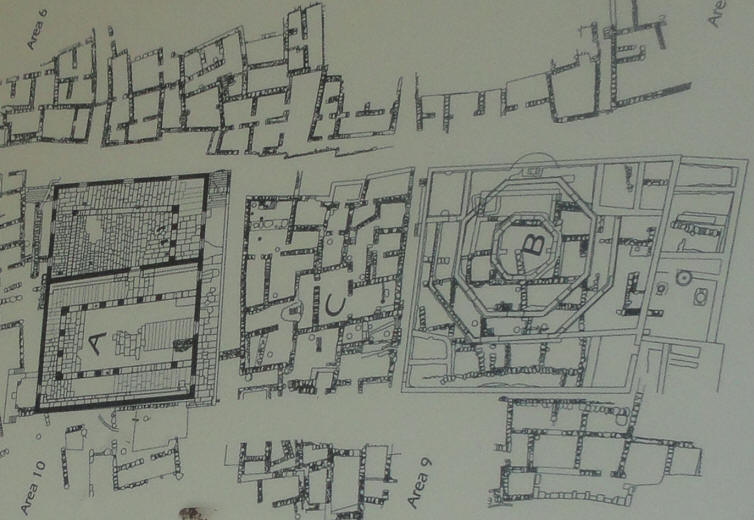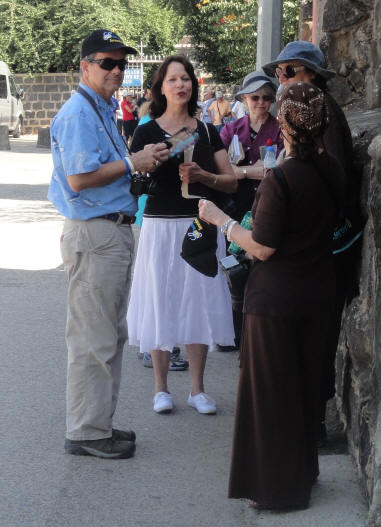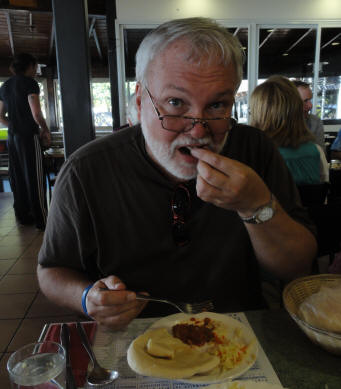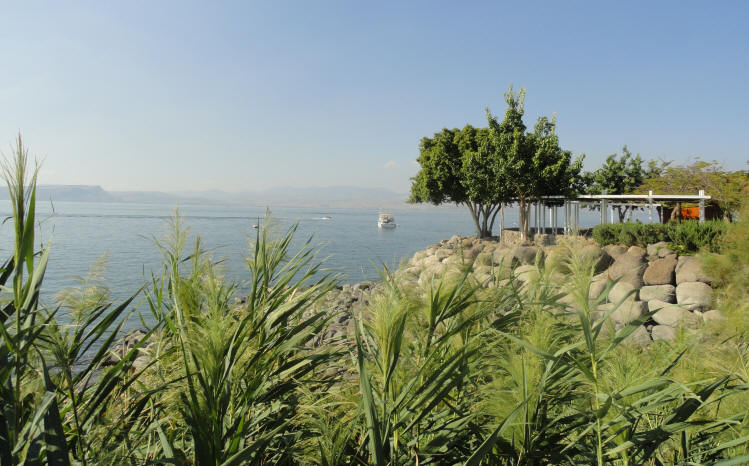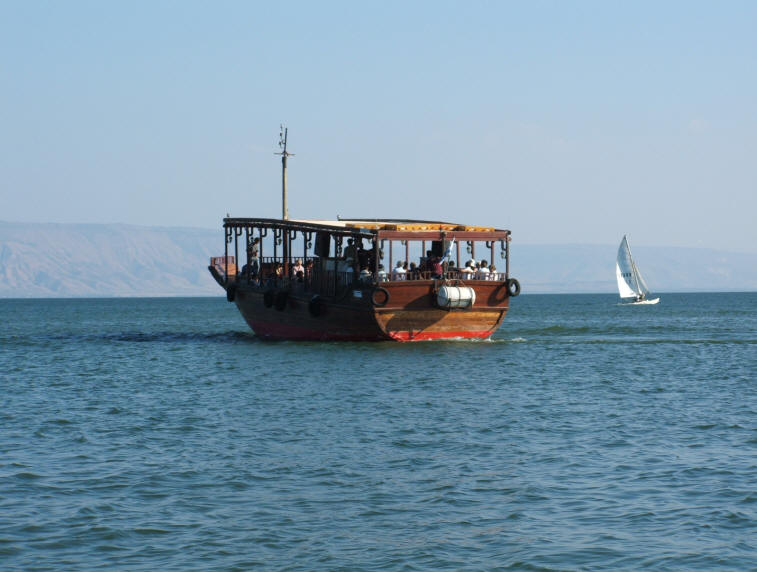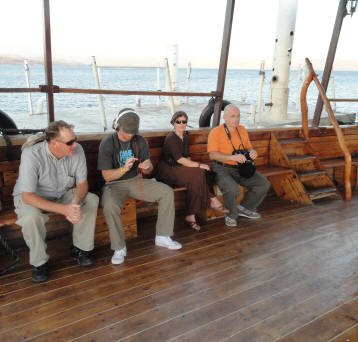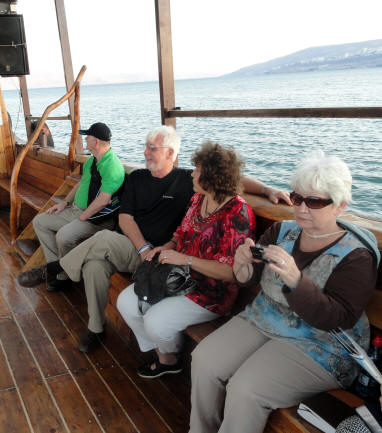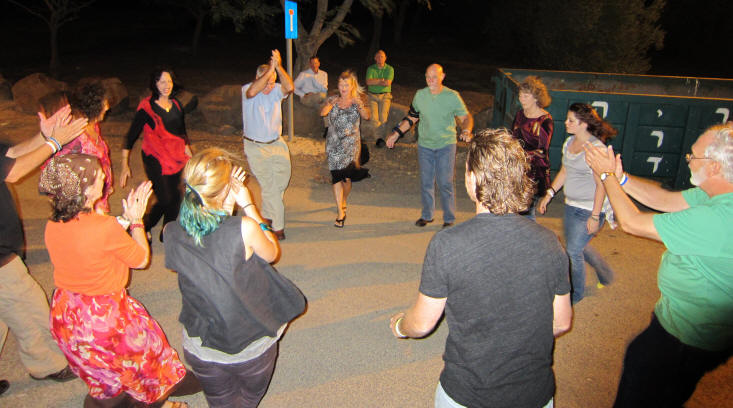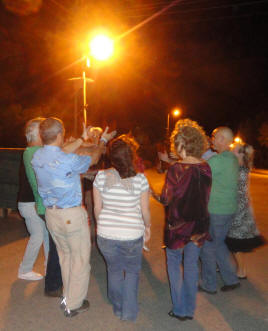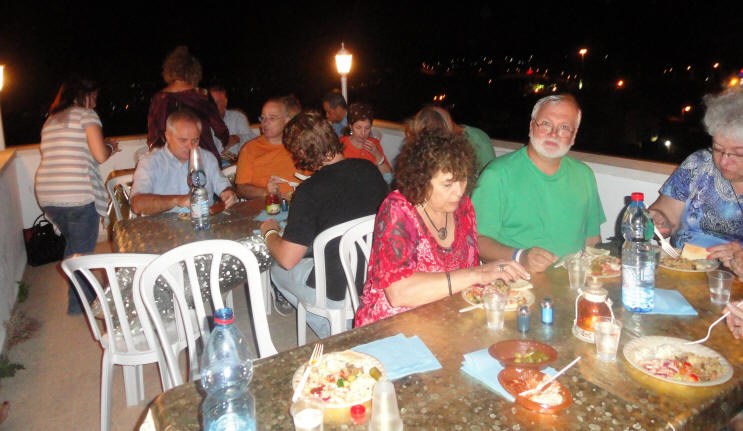Beit Yeshua
Israel Trip
15 October 2011
Day 4
DAY 1
12 October 2011
DAY 2
13 October 2011
DAY 3
14 October 2011
DAY4
15 October 2011
Mt. Arbel
Mt. of Beatitudes
Capernaum
Ein Gev
Lunch
Ancient Galilee
Boat
The
Jesus Boat
Sea of Galilee
Boat Ride
Dinner with
The HYDE
Family
DAY 5
16 October 2011
DAY 6
17 October 2011
DAY 7
18 October 2011
DAY 8
19 October 2011
DAY 9
20 October 2011
DAY 10
21 October 2011
DAY 11
22 October 2011
DAY 12
23 October 2011

Tiberias & the Sea of Galilee
John 6:1
After these things Jesus went over the sea of Galilee, which is the sea of Tiberias.John 21:1
After these things Jesus showed himself again to the disciples at the sea of Tiberias; and in this way showed he himself.Mark 1:16-18
As Jesus walked beside the Sea of Galilee, he saw Simon and his brother Andrew casting a net into the lake, for they were fishermen. “Come, follow me,” Jesus said, “and I will make you fishers of men.” At once they left their nets and followed himMatthew 15:29-31
Jesus left there and went along the Sea of Galilee. Then he went up on a mountainside and sat down. Great crowds came to him, bringing the lame, the blind, the crippled, the mute and many others, and laid them at his feet; and he healed them. The people were amazed when they saw the mute speaking, the crippled made well, the lame walking and the blind seeing. And they praised the God of IsraelDay 4
Daily breakfast at the hotel was always very good
Everyone was on the bus by 8:00 am and we were headed for Mt. Arbel.
Ready to go
Mount Arbel is a mountain in The Lower Galilee near Tiberias in Israel, with high cliffs, views of Mount Hermon in the Golan Heights, trails to a cave-fortress, and ruins of an ancient synagogue. There are documented Jewish cliff dwellings dating back to the Second temple period in the area. Josephus writes about the Roman conquest of some of the last Hasmonean rebels who dwelt in the cliffs of Mt Arbel. The area was declared a nature reserve in 1967.
The Arbel is a unique site that combines nature, heritage and an impressive cliff that overlooks the Sea of Galilee, the Golan and Mt. Hermon. At the site are remains of a settlement over 2000 years old. Its residents lived on the northern edges of the Arbel valley, in a village of natural caves located on the Arbel cliff and on Mt. Nital on the western side of the Arbel stream. The site is especially rich in natural treasures - winter and spring blossoming, nesting raptors and a variety of mammals that live in the are of the Arbel plateau and the Arbel stream.
The bus arrives and parks
Everyone starts the long hike up the mountain
Looking back down the mountain toward the bus
First view from the top of the mountain

Looking toward the Kinneret (Sea of Galilee)
Mt. Arbel Videos
Getting ready to hike back down
The Mount of Beatitudes refers to the hill in northern Israel where Jesus delivered the Sermon on the Mount. The traditional location for the Mount of Beatitudes is on the northwestern shore of the Sea of Galilee, between Capernaum and Gennesaret (Ginosar). The actual location of the Sermon on the Mount is not certain, but the present site (also known as Mount Eremos) has been commemorated for more than 1600 years. Other suggested locations have included the nearby Mount Arbel and even the Horns of Hattin.
Arriving at the site
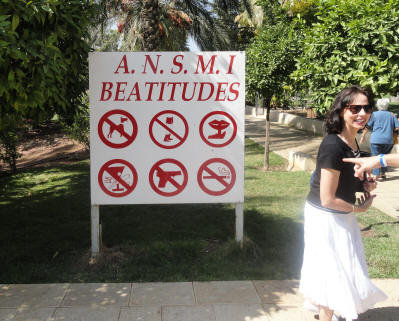
Catholic Chapel at the Mount of Beatitudes
Pausing to read Yeshua's Sermon on the Mount
Matthew 5:1-12
And seeing the multitudes, he went up into a mountain: and when he had sat down, his disciples came unto him:
And he opened his mouth, and taught them, saying,
Blessed are the poor in spirit: for theirs is the kingdom of heaven.
Blessed are they that mourn: for they shall be comforted.
Blessed are the meek: for they shall inherit the earth.
Blessed are they who do hunger and thirst after righteousness: for they shall be filled.
Blessed are the merciful: for they shall obtain mercy.
Blessed are the pure in heart: for they shall see God.
Blessed are the peacemakers: for they shall be called the children of God.
Blessed are they who are persecuted for righteousness' sake: for theirs is the kingdom of heaven.
Blessed are you, when men shall revile you, and persecute you, and shall say all manner of evil against you falsely, for my sake.
Rejoice, and be exceedingly glad: for great is your reward in heaven: for so persecuted they the prophets who were before you.
Capernaum was a fishing village in the time of the Hasmoneans (the ruling dynasty of Judea) and is located on the northern shore of the Sea of Galilee. It had a population of about 1,500. Archaeological excavations have revealed two ancient synagogues built one over the other. A Catholic church near Capernaum is built over the home of Peter.
The town of Capernaum is cited in the Gospel of Luke where it was reported to have been the home of the apostles Simon Peter, Andrew, James and John, as well as the tax collector Matthew. In Matthew 4:13 the town was reported to have been the home of Yeshua (Jesus). According to Luke 4:31-44, Yeshua taught in the synagogue in Capernaum on Shabbat. He then healed a man who had the spirit of an unclean devil and healed a fever in Simon Peter's mother-in-law. According to Luke 7:1-10, it is also the place where the Roman Centurion asked Yeshua to heal his servant. Capernaum is mentioned in the Mark 2:1, as the location of the famous healing of the paralytic lowered through the roof to reach Yeshua. According to the Gospels, Yeshua selected this town as the center of his public ministry in the Galilee after he left the small mountainous hamlet of Nazareth (Matthew 4:12-17).
The entrance to Capernaum
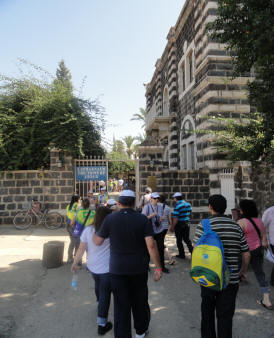
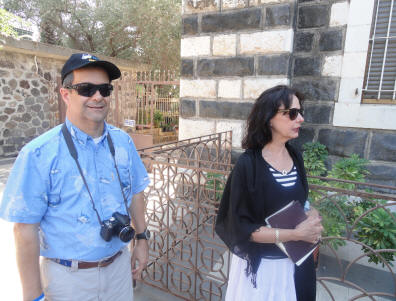
A look at the Kinneret (Sea of Galilee) from Capernaum - can you see the small boat?
Pausing in the shade as our tour guide, Pamela, tells everyone about Capernaum
To listen to the videos of Pamela talking about Capernaum, Click Below
The 4th Century Synagogue
The 4th Century Synagogue or the "White Synagogue"
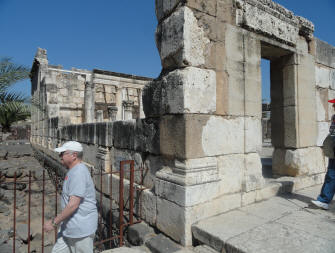
The ruins of this 4th building, are among the oldest synagogues in the world. The large, ornately carved, white building stones of the synagogue stood out prominently among the smaller, plain blocks of local black basalt used for the towns other buildings, almost all residential. The synagogue was built almost entirely of white blocks of calcareous stone brought from distant quarries. The building consists of four parts: the praying hall, the western patio, a southern balustrade and a small room at the northwest of the building. The praying hall measured 24.40 m by 18.65 m, with the southern face looking toward Jerusalem.
The synagogue is made up of four units, namely the Prayer Hall, the Eastern Courtyard, the Southern Porch, and a Side-Room near the northwestern corner of the Prayer Hall.
The Prayer Hall, with the facade toward Jerusalem, is rectangular in ground plan. A stylobate divides the spacious center nave from the aisles. Stone benches were set along the eastern and western aisles. The focal point of the Prayer Hall was in the Jerusalem-oriented wall of the southern nave.
The trapezoidal shape of the court was dictated by the line of the houses along the main north-south street of the town. Two staircases gave access to the unroofed porch.
Another staircase was on the northeastern corner of the courtyard. The synagogue was built almost entirely of limestone blocks. The decorative elements (lintels, cornices, capitals, etc.) leave the visitors spellbound. They synagogue is not earlier than the end of the fourth century AD according to the Franciscan archaeologists. Other archaeologists prefer a date in the late third century A.D.
Under the monumental synagogue a basalt-stone wall was found, which is interpreted by the excavators as the remains of an earlier synagogue, either of the time of Jesus (according to Corbo) or of a later date. A first century AD stone pavement, found under the artificial podium of the monumental synagogue in the central area of the Prayer Hall, seems to belong to the synagogue built by a Roman centurion. Jesus visited several times that synagogue (John 6:59).
Under the side aisles of the Prayer Hall and in the area of the courtyard, several remains of houses were found with potter of the Hellenistic and Roman periods.
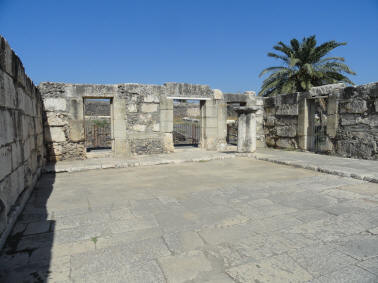
The 1st Century Synagogue
Beneath the foundation of the 4th century synagogue lies another foundation made of basalt and appears to be the foundation of a synagogue from the 1st century, perhaps the one mentioned in the Gospels. Remains of the 1st century synagogue
The Town of Capernaum
The layout of the town was quite regular. On both sides of an ample north-south main street arose small districts bordered by small cross-sectional streets and no-exit side-streets. The walls were constructed with coarse basalt blocks and reinforced with stone and mud, but the stones (except for the thresholds) were not dressed and mortar was not used. The most extensive part of the typical house was the courtyard as well as grain mills and a set of stone stairs that led to the roof. The floors of the houses were cobbled. Around the open courtyard, modest cells were arranged which received light through a series of openings or low windows.
A study of the section located between the synagogue and the octagonal church showed that several families lived together in the patriarchal style, communally using the same courtyards and doorless internal passages. The houses had no hygienic facilities or drainage; the rooms were narrow. Most objects found were made of clay: pots, plates, amphoras and lamps. Fish hooks, weights for fish nets, striker pins, weaving bobbins, and basalt mills for milling grain and pressing olives were also found.
The 1st Century Town of Capernaum
Layout of Capernaum
A. The Synagogue, C. Town Houses, B. Peter's House/The Octagonal Church
Peter's House
The traditional house of Peter was close to the lake shore and was flanked to the east by the main, north-south, road of the village. Spacious courtyards with a staircase and fire places were shared by several roofed rooms. The Christian community of Capernaum paid special attention to a square room. Located between the synagogue and the lakeshore, it was found near the front of a labyrinth of houses from many different periods. In the late first century A.D. it was changed into a house for religious gatherings. in the fourth century A.D. the same house was enlarged and was set apart from the rest of the town through an imposing enclosure wall. In the second half of the fifth century A.D. an octagonal church was built upon the house of Peter and remained in use until the seventh century. The excavators concluded that one house in the village was venerated as the house of Peter the fisherman as early as the mid-1st century, with two churches having been constructed over it. Peter's House/The Octagonal Church
Mill Wheels and an Olive Press
Additional photos from the site
Headed back to the bus
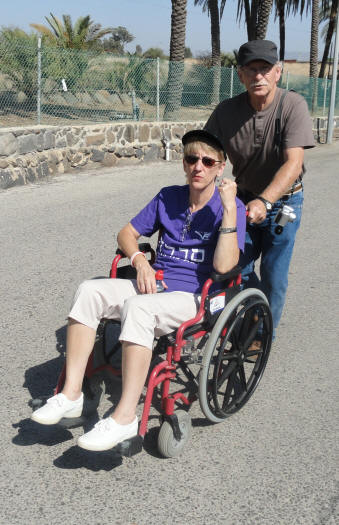
Our lunch on this 4th Day of the trip, Saturday, 15 October 2011, was "St. Peter's Fish" at EIN GEV Pearl of Galilee Restaurant. Many chose the traditional Sea of Galilee meal, but others opted for either pizza or spaghetti.
The food for the entire trip was excellent and this restaurant was no exception
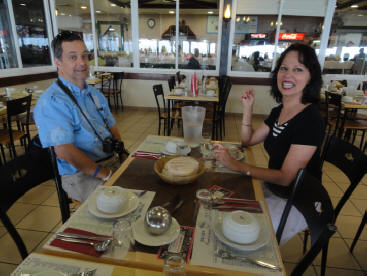
Pita, Humus, Beets, Slaw, Carrots, Soup ...

... and of course St. Peter's Fish
The restaurant was on the edge of the Sea of Galilee
Every hotel and restaurant had a sukka set up for Sukkot
The Ancient Galilee Boat
Also known as "The Jesus Boat"
In the Galilee seaside village of Kibbutz Ginosar, a historic archaeological discovery was made on January 24th, 1986. The discovery rocked the worlds of faith, history and archaeology. Following a prolonged drought that lowered the Galilee’s sea level, two fisherman brothers, Yuval and Moshe Lufan, discovered an ancient boat. In Israel, a land blessed with a rich history and hundreds of thousands of artifacts, important discoveries happen on a fairly regular basis. This discovery, though, was different. Experts were brought in to establish the boat’s authenticity and exact age using scientific methods, including three independent precision Carbon-14 dating examinations. Word of this unprecedented discovery traveled far and fast throughout the scientific community and to people of faith around the world. What had been found was a Bible-era artifact like no other. Some consider it to be among the top ten biblical archaeological discoveries ever found. The Jesus Boat is a one-of-a-kind actual touch-point back to the exact time and place of Jesus. The Museum
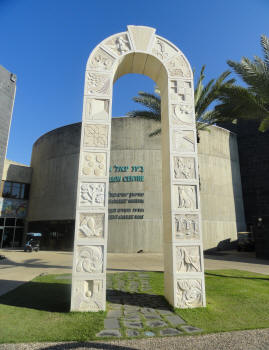
Doug & Lynda, Duke & Myrl pause to take some photos
Entrance to the Museum
See the Video about the brothers who found the boat in the Sea of Galilee
The Ancient Boat - The Jesus Boat
Check out our video of the Ancient Boat
The boat would have looked something like this originally
Rita and Paul check out the local olive trees at the Jesus Boat site
One of the things we had all been looking forward to was the boat ride on the Kinneret (Sea of Galilee). Our cruise on the fresh water lake was scheduled in the late afternoon while it was still daylight, but it turned dark before the cruise was over. Heading down to the boat
Once everyone was on the boat, off we go
Everyone settles down but that doesn't last long


Soon many were up dancing as we sang numerous songs of praise and worship
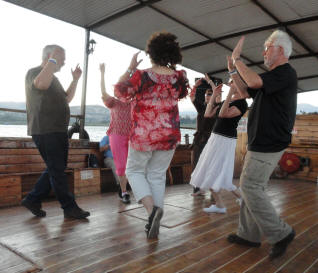
Israeli Folk Dancing on the Kinneret Boat Ride
The men get up and show they can dance, too
The men do a simple dance
As the sun sets, everyone settles down again to enjoy the lights around the lake
Way too soon the sunset cruise was over and everyone exits the boat
Dinner With the Hyde Family
As this Saturday, 15 October 2011, winds down, we all headed back to the hotel to quickly clean up and we're off to have dinner with Richard & Carolyn Hyde and their family. Carolyn had suffered a stroke earlier that week and even thou she had recovered considerably, she still in the hospital and was not able to be with us. Richard and the family still wanted us to come for dinner, so we did. After Richard welcomed everyone
he soon had us in the street teaching us the dance "Mayim Mayim"
not knowing that we already knew the dance. It was lots of fun!

Once in the house, Richard introduced us to his two youngest children - Avi and Eliana
Eliana & Avi ask Gid to join them as they lead us into a time of praise and worship
Listen as Eliana leads us in Worship - "Baruch Ha Ba B'Shem Adonai"
"Father Please Forgive Me"
"One Voice"
[Forgive my "off key" humming in the background - but the song was too good not to share]
The ladies from Beit Yeshua dance to "Days of Elijah"
After a time of prayer, we headed up to the roof-top for a Sukkot dinner
Carolyn Hyde is a gifted Messianic singer.
To hear Carolyn's music and learn more about their ministryCheck out their website at: http://www.heartofg-d.org
More Photos and Information From the 2011 Sukkot Trip
Day 2 - 13 Oct 2011 Day 3 - 14 Oct 2011 Day 4 - 15 Oct 2011 Day 5 - 16 Oct 2011 Day 6 - 17 Oct 2011 Day 7 - 18 Oct 2011 Day 8 - 19 Oct 2011 Day 9 - 20 Oct 2011 Day 10 - 21 Oct 2011 Day 11 - 22 Oct 2011 Day 12 - 23 Oct 2011


